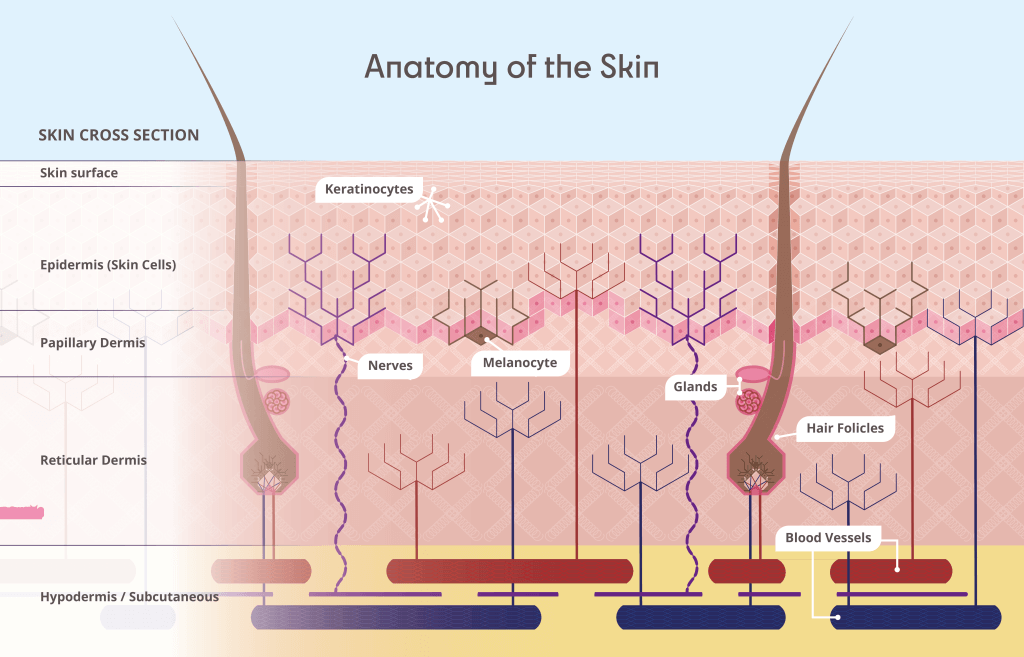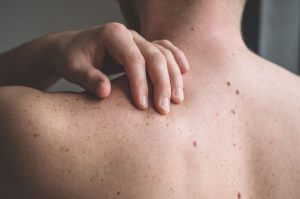Our largest organ
Skin is the ‘lasagne’ of the human body. Our largest organ, it is made up of three distinct layers; the upper epidermis, the middle dermis and the hypodermis – the bottom layer of skin.
Each of these sections plays a unique role in maintaining our skin’s look and purpose.

The Epidermis
Take a look at your skin. That is your epidermis. More than 90% of it is comprised of one type of skin cell, the keratinocytes. These cells make an abundance of keratin, the protein that ensures our hair, nails and skin are hard, strong and water-resistant.
Made up of four layers of skin cells, the epidermis also prevents pathogens and bacteria entering the internal body. We shed 500 million cells from the Stratum Corneum, the outer layer, every day. This is because new skin cells form at the bottom of the epidermis pushing dead keratinocytes upwards and outwards. Every two to four weeks, this entire outer layer is shed. Perhaps a little hard to stomach, however this regeneration and replacement process is vital for the skin to keep doing its crucial work effectively.
Dead keratinocytes also protect areas of our body most at risk from physical damage, forming the extra padding on the soles of our feet and the palm of our hands.
Melanocytes, the pigment producing cells which give our skin colour, are also found in the epidermis.
The Dermis
Hidden but hugely important, the dermis is home to some of skin’s most crucial structures. Located directly below the epidermis, this layer is home to the nutrient-rich blood vessels which keep our whole skin alive.
Nerves enabling us to experience touch are also found here, along with hair follicles and glands.
Unlike the epidermis, the dermis is not made up of several stratified layers of cells. Instead, it is primarily comprised of just two layers: the papillary dermis and the reticular dermis.
The dermis mainly consists of connective tissue which has many different cells, including fibroblasts, which make the tissue fibres, immune cells, fat (adipose) cells and stem cells.
The Hypodermis
‘Hypo’ means under – so this is the layer found beneath the dermis. It’s also known as the subcutaneous (fat underneath the skin) layer. This fatty tissue acts as a shock absorber and gives our skin extra structural support. It’s also an insulator and reserve battery. When energy is low, fat stored in our hypodermis can be broken down to release more.
Nerves and blood vessels interlace through this bottom layer to reach the dermis while leptin, the hormone which signals to our brain that it is time to stop eating, is released from our fat cells.
The thickness of the hypodermis varies in different regions of the body and in different people. In men, the hypodermis is thickest in the abdomen and shoulders. In women it is thickest in the hips, thighs, and buttocks.



